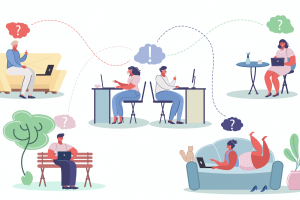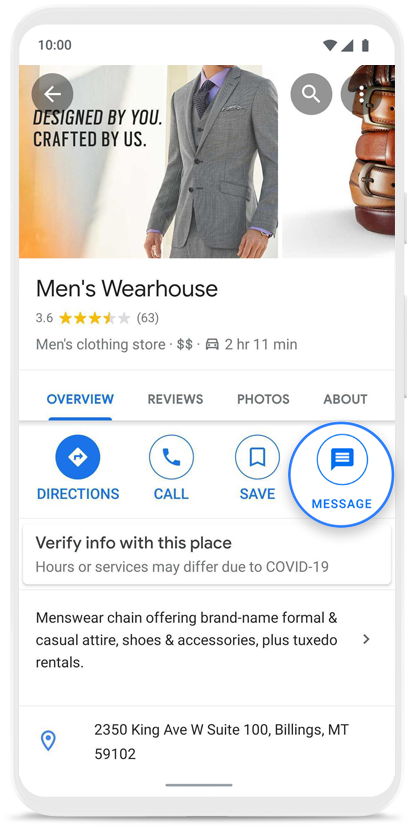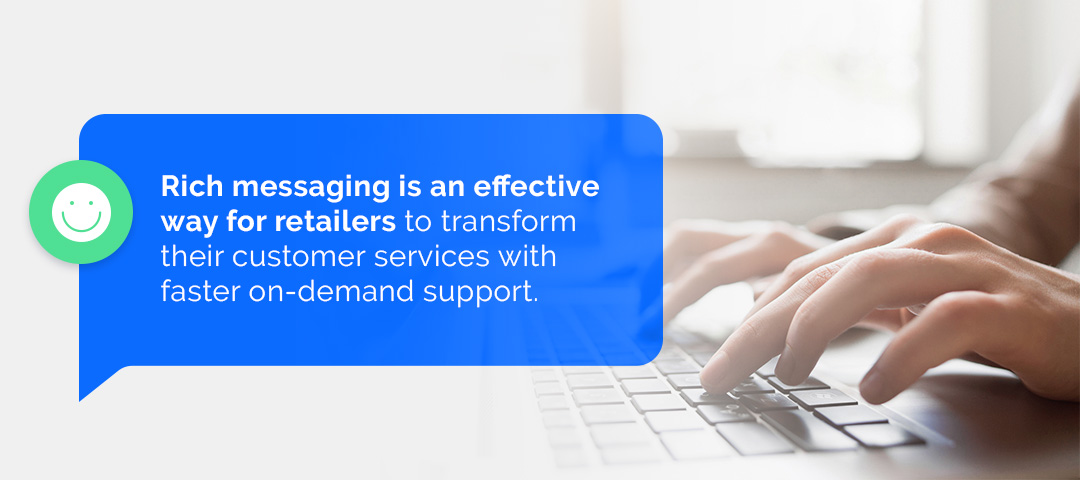Turning Chatbots Into Virtual Shopping Assistants
These days, brick-and-mortar retail is quickly giving way to online shopping. By 2022, eCommerce sales are projected to reach over $850 billion — and it doesn’t seem like the growth of online shopping will be slowing down beyond that. Many consumers have a preference for convenient shopping experiences — and what’s easier than shopping from the comfort of home? However, what hasn’t changed is the fact that shoppers want assistance if they have a problem or question. That’s where virtual shopping assistants shine.
Virtual shopping assistants are support bots that can directly support consumers as they browse. While being available around the clock, these assistants can answer questions, resolve problems, and provide suggestions to consumers, all from the convenience of a chat window.
In this guide, we’ll provide all the details on virtual shopping assistants, including the benefits to shoppers and retailers, how retailers are using chatbots as virtual shopping assistants, and how to get started with Quiq.
What Are Virtual Shopping Assistants?
A virtual shopping assistant is essentially a chatbot that converses directly with online consumers. These assistants work by using a combination of machine learning and language processing software to understand shopper queries and match them with appropriate solutions. As these assistants conduct more conversations, they learn more about consumers’ preferences and language patterns, making the bot more effective over time.
Digital shopping assistants are commonly installed on a store’s website. When a new visitor comes to the website, these assistants automatically greet the shopper through a chat window, offering assistance and notifying them of any current promotions. The potential consumer can then type responses into the chat window to ask questions or request recommendations, which the assistant will answer in a matter of seconds.
Why Do Consumers Like Virtual Shopping Assistants?
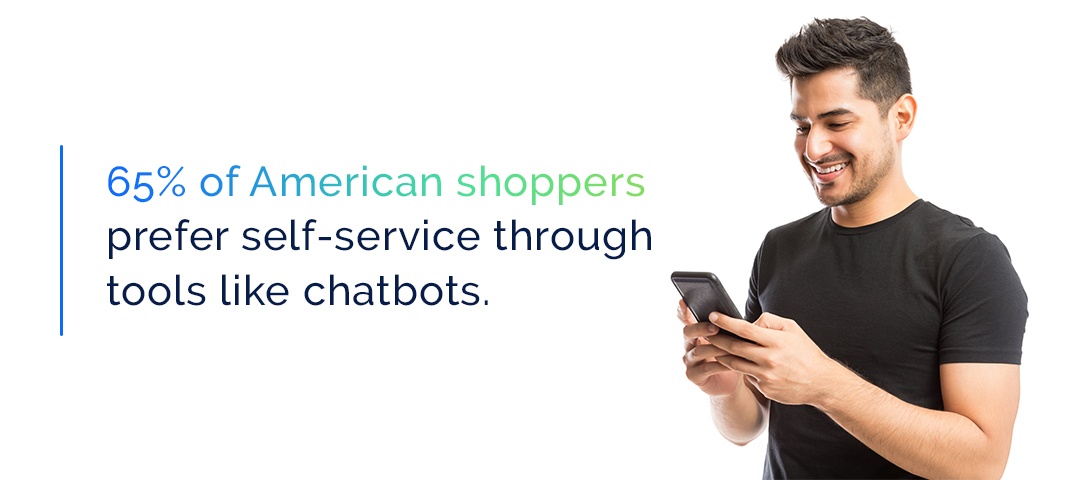
Virtual shopping assistants are quickly becoming a staple in the retail industry, especially with younger generations. There are many reasons for this preference, ranging from response time to personalized answers. As a result, 65% of American shoppers prefer self-service through tools like chatbots.
Here are a few specific reasons why consumers enjoy communicating with an online shopping assistant:
- Quick responses: Digital shopping assistants provide instant answers to all questions a consumer may have. Chatbot assistants can pull information about orders and deliveries, provide recommendations, and even assist with common problems and complaints. If a shopper has a simple question, they won’t have to wait for a response to a customer support ticket, which can possibly deter them from making a purchase altogether.
- Round-the-clock assistance: Virtual shopping assistants don’t have to work in a certain timeframe. These bots can provide information around the clock, no matter the time of day. Bots can also handle hundreds of inquiries at once, meaning consumers don’t need to wait for the next available agent to answer their questions. With a virtual assistant, consumers can get the answers they need when they need them.
- Personalization: Chatbots can store information based on shoppers’ accounts, allowing for enhanced personalization. These virtual assistants can use data regarding a consumer’s past purchases and behaviors to make informed recommendations.
- Faster experiences: Virtual assistants can quickly pull information to answer consumers’ questions, allowing consumers to make faster shopping decisions. Some chatbots even allow consumers to complete purchases from the chat window, making for a speedy shopping experience.
On top of these benefits, younger generations are more open to embracing new technologies like digital shopping assistants and are more excited to use platforms that integrate AI.
Benefits of Virtual Shopping Assistants for Retailers
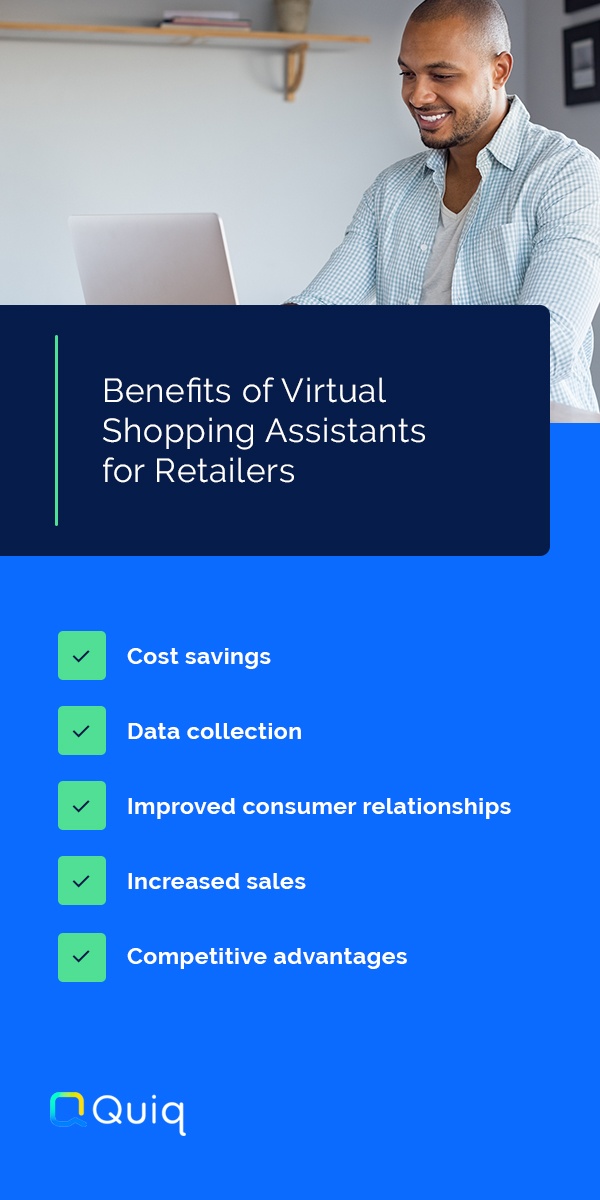
In addition to benefitting consumers, digital shopping assistants can also give retailers an edge in the market. These platforms help retailers achieve advantages like cost savings and increased sales, so an investment in chatbots makes a real difference. Additionally, retailers that want to be on the cutting edge of eCommerce technology can expect to reach and develop relationships with consumers who enjoy those new features.
Some of the most significant benefits online shopping assistants offer retail businesses include:
- Cost savings: Virtual assistants take the workload off live agents by automatically handling the majority of inquiries. Instead of hiring new members for an internal support team, retailers can implement a virtual shopping assistant that handles most questions and complaints. This concept reduces the number of live agents needed, allowing them to focus on the most complex problems and inquiries while the chatbot resolves questions.
- Data collection: eCommerce chatbots can easily collect information about consumers and their preferences by saving their behaviors and purchases in a database. This information is invaluable to retailers, providing demographic and preference information that can be used to create powerful targeted marketing campaigns.
- Improved consumer relationships: Virtual assistants provide 24/7 support and a personalized experience, which helps to create more positive experiences for shoppers. As a result, retailers have a chance to build relationships with shoppers, encouraging them to come back in the future.
- Increased sales: Online shopping assistants can also help generate more sales through upselling and cross-selling, offering upgrades and related purchases at the check-out window. Additionally, online shopping assistants can send out reminders to consumers that have abandoned their carts, encouraging them to follow through with their purchase.
- Competitive advantages: All of these benefits equate to an advantage over competitors, especially those that don’t use chatbots. If a shopper sees that a retailer has chatbot capabilities on their website, they’ll be more likely to stay on their website and make a purchase.
Due to the significant benefits of virtual shopping assistants for both retailers and consumers, it’s easy to see why these tools are quickly taking over the retail industry. eCommerce chatbots are expected to increase consumer retail spend to $142 billion by 2024, meaning more retailers will likely adopt chatbots over the next three years. With the continuing boom of eCommerce, retail businesses can use chatbots to meet consumer expectations going forward.
How to Use a Chatbot as a Virtual Shopping Assistant
With all the benefits of digital shopping assistants, many retailers are looking to implement their own within the next few years. While there are many advanced options available, eCommerce chatbots are still the most common type of virtual shopping assistant. These tools are popular due to their versatility and relative ease of implementation.
It’s key for retail leaders to understand how to use a chatbot as a virtual shopping assistant to ensure they maximize their effectiveness. These assistants have several capabilities. As a result, retailers may want to use them differently depending on their unique needs.
Some essential functions chatbots can fulfill to become virtual shopping assistants include:
- Engage visitors: Chatbots are a great way to engage new visitors on a site without being intrusive. Shoppers can interact with the chatbot as much or as little as they want, but they’ll always have the option available to them. Retailers can also ensure every chatbot offers the same level and quality of information to consumers, whether that’s information about products and promotions or updates on orders.
- Respond to questions: One of the most common ways to use chatbots as virtual shopping assistants is as an interactive FAQ page. Visitors can type in their questions, and the AI will determine the best response. This way, consumers don’t need to get frustrated while hunting down information — their virtual assistant can provide them learn more about products, shipping costs, refund policies, and store hours with a simple query.
- Provide product recommendations: Virtual shopping assistants can also be programmed to provide product recommendations. Using data collected about a shopper’s immediate needs and past behavior and preferences, virtual shopping assistants can show one or more product options that would likely suit the consumer. This chatbot feature is a surefire way to enhance consumer experiences, as product recommendations both simplify and speed up the shopping process.
- Order information: Every online shopper is excited after they place an order online, and are looking forward to getting confirmation and information about their order’s progress. While consumers often get this information via email, retailers can also set up online shopping assistants to provide this information when prompted. This way, consumers can easily track the progress of their order, get tracking information, and check in on updates.
- Promotion and sale information: Virtual shopping assistants can also be used to offer deals and coupons to shoppers. Different coupons and promotions can be offered at different stages of the shopping experience, depending on the consumer in question. For example, first-time shoppers may see a welcome discount to encourage their first purchase, while repeat consumers may see seasonal offers and product-specific discounts based on their previous purchases. If a shopper abandons their cart, the assistant can even offer a discount as an incentive to complete the purchase.
- Cart retrieval: Nearly 85% of online shoppers have abandoned a purchase. Virtual shopping assistants can help reduce the rate of cart abandonment by checking in on consumers and answering their questions. If a shopper abandons their cart, online shopping assistants can send reminders when the person revisits the site or social media page. The assistant can even be programmed to offer discounts to encourage consumers to complete their purchases. These types of messages are less likely to be ignored than emails, leading to a higher conversion rate.
- Subscription management: Chatbots can also be programmed to help with subscription management for consumers with retail accounts. All shoppers need to do is provide their credentials, and a chatbot with this capability can look up their profile and find member benefits, coupons, and rewards. These chatbots can also be programmed to provide information about points systems, including how many points shoppers have, how many points they need for their next discount, and how many points they’ll earn from their current cart. Chatbots can also be programmed to assist with subscription management, helping shoppers increase or decrease their membership levels and subscription schedules.
Many chatbot programs are available for retailers to explore, and they can customize them to fulfill one or more of these functions.
How to Get Started With Chatbot Implementation
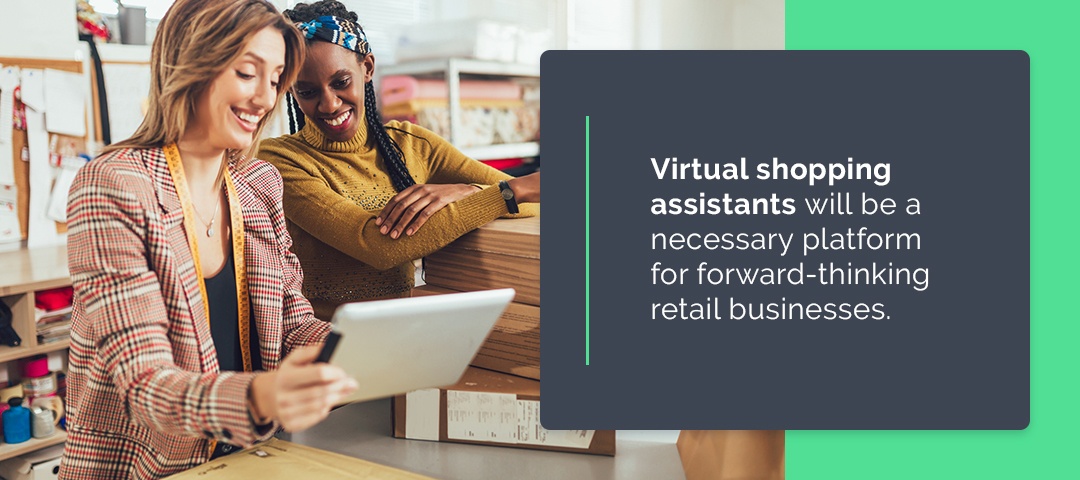
Virtual shopping assistants are invaluable to online retailers and will be a necessary platform for forward-thinking retail businesses. However, each retailer is unique, so it’s essential to understand how to effectively implement eCommerce chatbots for each retail business’s needs.
Some of the key items to consider before pursuing a chatbot as a virtual shopping assistant include:
- Functions: First, consider what core functions the chatbot needs to fulfill. Does the retailer have subscriptions or memberships that need to be managed? Is chat-window purchasing a feature that would benefit the retailer? Knowing the most important functions to enable will help inform a retailer’s choices when they start designing an online shopping assistant program.
- Integrations: Think about the types of integrations the digital shopping assistant will need. What systems does it need to plug into? Does it need speech-to-text or text-to-speech capabilities down the road? Look for solutions that are flexible enough to take on new integrations as the retail business evolves.
- Updates: Consider how frequently the chatbot will need to be updated. Does the retail business’s product line rotate regularly? Are there new promotions that will need to be added to the system? Look for systems that automatically update product information and can easily undergo manual updates. This way, retailers can communicate the most updated information to their consumers.
- Start small: Retailers shouldn’t try to implement a robust chatbot system from day one. Instead, focus on the most important functions first, such as a customer support chatbot. From there, the retailer can add more functions over time, testing thoroughly as they go. As a result, they won’t waste time and effort implementing features they don’t need.
On top of these recommendations, retailers should be sure to work with an experienced chatbot provider. An expert provider will help with programming and implementing a virtual shopping assistant, making recommendations for functions and integrations and helping update platforms as the retailer grows.
Demo Quiq Today for Your Retail Business
Virtual shopping assistants are effective tools that help improve consumer experiences and generate sales, all while improving productivity and reducing the strain on retailers’ internal teams. With current generations increasingly favoring online shopping experiences and consumers warming up to AI chatbots, now is the perfect time for retailers to try shopping assistants for their unique needs. There are numerous ways to implement digital shopping assistants in retailers, and various platforms to choose from. If your retail business is looking for a comprehensive solution that can help you get started with chatbots, Quiq is here to help.
Quiq is a conversational customer engagement platform designed for the retail industry. The goal of Quiq is to help retailers deliver exceptional shopping experiences with every interaction, and our chatbot system does just that. The Quiq platform supports messaging across a range of channel types, including text, web chat, social chat, Apple Business Chat, and Google’s Business Messages. Retailers can use as few or as many channels as they need to communicate with consumers effectively.
With multiple chatbot options, rich messaging experiences, and various integration options, Quiq is here to help you build the best virtual shopping assistant for your retail business. Try Quiq for yourself by scheduling a live demo today.



